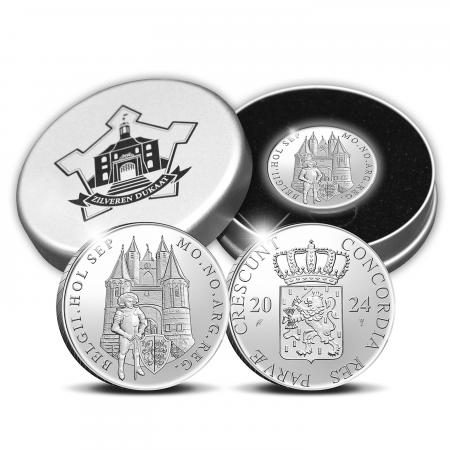|

Helpoort: oldest, still existing city gate in the Netherlands
For the third part in the new series, we travel all the way to the south of the Netherlands. There, in the city of Maastricht, is the oldest, still existing city gate of the Netherlands: the Helpoort. This gate is from 1229 and is part of the first, Medieval surroundings of the city. The gate was used as defense, and after second half of the 15th century, it was also used as arsenal, gunpowder storage and as a residency.
The Helpoort was built in 1229, after receiving approval from Duke Hendrik I from Brabant. The name Helpoort is directly translated as ‘’Hellgate”, which doesn’t have a positive ring to it... It has been said that the street behind the gate was a ‘red light district’, and going there was considered a great sin and would send a person to hell. The city gate also had other names, like Jekerpoort, Hoogbruggepoort, De Twee Torens (Two Towers) and more. This is because of the many functions the gate has had. Presently, the city gate is being used by the Vestingmuseum. It is open from March 9th to November 3rd. You can discover all about the history of the gate and the city of Maastricht.
Duke Karel van Egmond
In the previous series (Dutch Castles), knight Godard de Ginkell was on the coin. According to the Dutch Mint Act, a knight in armour should be on the coin. This time, Karel van Egmond (1467 – 1538) is taking over this honor. This armored man on the obverse of the coin was an important duke of several areas in the Netherlands. During his reign, he had to deal with threats from emperor Charles V. He also was the last independent feudal ruler of the Netherlands. For this new series, Karel van Egmond will be on the Silver Ducat.
Design
The obverse of the Silver Ducat “Helpoort” depicts Duke Karel van Egmond in front of the famous building. The province weapon of Limburg can be found on his shield. The inscription on this issue reads: “MO.NO.ARG.REG.BELGII.LIMB”. “MO.NO.ARG.REG.BELGII.LIMB.” is the Latin abbreviation for “Moneta Nova Argenta Regni Belgii”: New Silver coin of the Kingdom of the Netherlands. LIMB stands for the province of Limburg.
On the reverse of the Silver Ducat, the national coat of arms of the Netherlands with the Royal Crown between the numbers of the year can be found. The inscription reads: “CONCORDIA RES PARVAE CRESCUNT”, Unity makes Strength. Here you can also find the mint mark and the privy mark. As requested by many, the packaging for the new series is adjusted. The Silver Ducat is in a smaller packaging that not only takes up less space, but also fits in the mailbox. |















